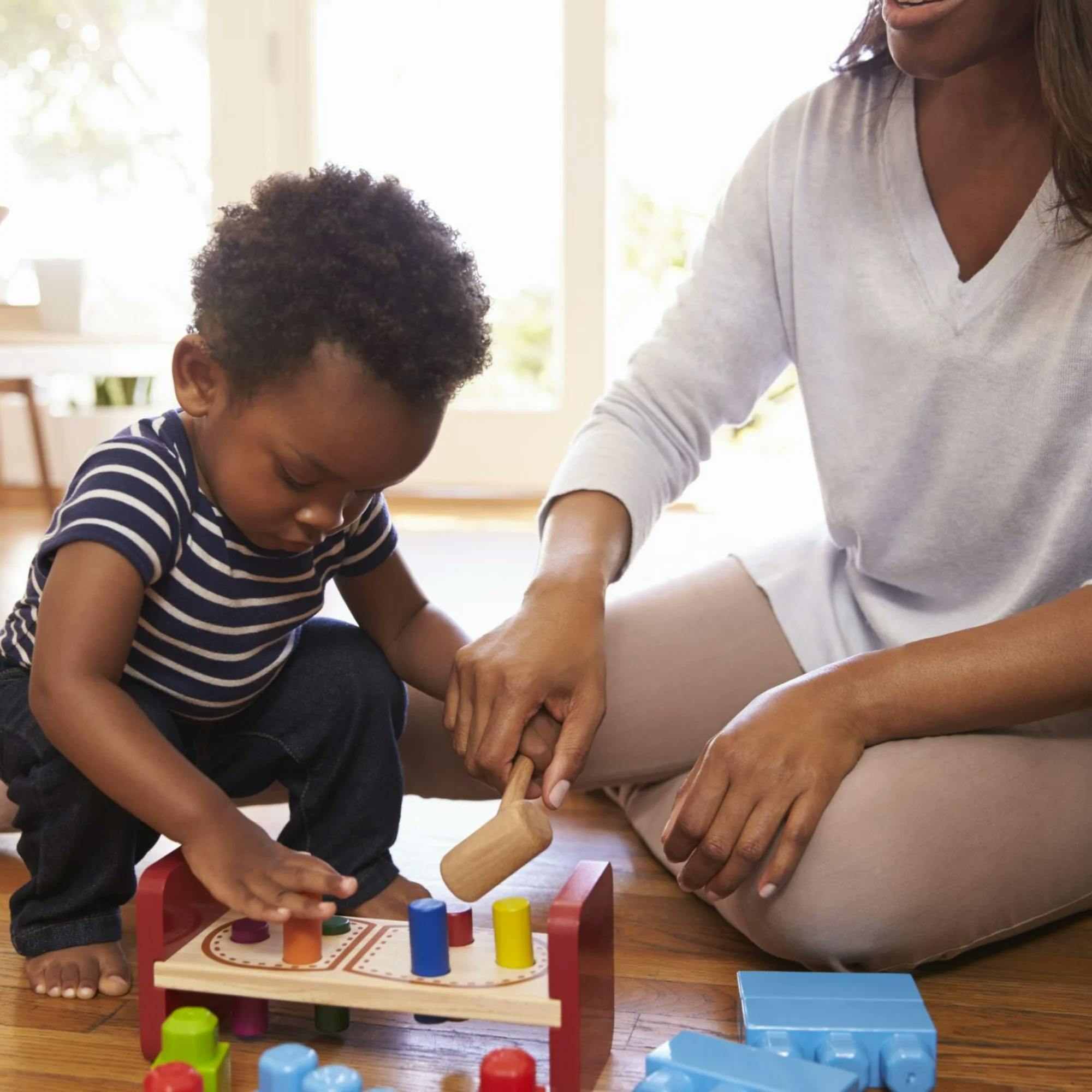
10 Ways to Make Speech Therapy Practice Fun
 Leanne Sherred, M.S., CCC-SLP
Leanne Sherred, M.S., CCC-SLP
Practicing speech therapy activities at home, and using communication-building techniques during everyday interactions with your child, is one of the best ways to improve their speech and language development. This isn't just my firsthand experience as a speech-language pathologist--it's backed by a mountain of research.
But sometimes it can feel overwhelming to think about fitting in practice and motivating kids to participate. I get it! Speech practice is definitely a lot of work for kiddos, but there are plenty of ways to make it fun.
Read on for some tips and tricks to keep your child motivated to practice their speech. Every child has their own unique learning style. Once you find what works best for your kiddo, you’ll see how quickly speech practice can go from something they tolerate, to something they actually look forward to.
Knowledge is power
Take 5 minutes to check your child’s speech milestones with our free online screener.
 Start the screener
Start the screener1. Get up and get moving
A simple way to introduce some excitement into speech therapy practice is to pair it with movement activities. Did you know that some children learn best when they're physically moving around? Movement stimulates the brain, and a little exercise is never a bad thing! If you think this is true for your child, try some of these activities while you practice:
Play hide and seek
Go on a scavenger hunt
Play Simon Says
Create an obstacle course
Toss a ball back and forth
2. Try out new crafts
Similar to movement activities, some children pay attention best while they're participating in a creative, hands-on activity. Crafts are the perfect example!
Crafts are particularly well-suited for practicing articulation, or speech sounds. We'll use the /s/ sound for this example.
Pick a craft for your child to make that's centered on the /s/ sound. You could make a snake out of a paper plate and let your child color it, practicing the hissing “sssssss” sound while they work. Sock puppets, coloring books, gingerbread houses, and Play-Doh are other great examples, but any craft will work as long as it helps your child target their specific speech sounds.
Crafts are also a great way to incorporate receptive language skills. You can easily have your child follow single or multistep directions. Give directions for each step of the craft and see how well you child responds. For example, "First, roll the Play-Doh into a ball, then stretch it out to make a snake!" Hopefully they'll be having so much fun they won’t even realize they’re working.


3. Turn on the music
Music is a wonderful way to target speech goals--especially when it comes to early language!
For toddlers and early communicators, sing songs or nursery rhymes together. Pause occasionally as you sing to give your child opportunities to fill in the blank. Check out this brief video to watch one of our speech therapists use this technique!
You can even practice having your child imitate your gestures with songs that involve playing with their hands. These are songs like “Wheels On The Bus” and “The Itsy Bitsy Spider.” Imitating hand motions is a skill that can help your child increase their motor movements and expressive language abilities, which includes how well they use language to communicate their needs, wants, and desires.
4. Take practice outside
Getting outside is the perfect way to lift everyone’s mood and have fun practicing together! You can easily incorporate some speech practice while you go on a walk together, play on the swing, or spend a few hours at the playground.
Let’s use the example of swinging. This is a great way to help your child expand the length of their phrases during speech, moving from saying single words to using multi-word phrases.
When your child swings towards you, hold the swing for a second and see if your child will request that you continue pushing them. They may say “swing,” “more,” or “go.” Model what your child said in a phrase that is one word longer than what they offered. For example, if they say, “Swing!” then model, “More swing!” or "Swing please." Wait expectantly and see if they imitate your longer phrase. After their request, immediately reward them by pushing them on the swing!
Looking for a speech therapist?
Teletherapy makes it easy. We serve families with a range of speech, language, and feeding needs across the U.S. Get started today!
 Find a speech therapist
Find a speech therapist5. Pick relatable topics
When working with your child, take a "child-led" approach. In other words, try to choose target words and questions that center around their natural interests. For example, if your child really loves dinosaurs, pick discussion topics or target words focused on their favorite prehistoric creature.
It will be much easier for your child to engage in something that they enjoy talking about--so use this to your advantage. This is also a great strategy to use when choosing books to read together.
6. Play games
Your house is probably stacked with games your child already enjoys playing, like Candyland, puzzles, or word searches. The trick here is to incorporate speech practice into their favorite game in a way that feels natural.
Here's a simple example: Let your child first pick out a game they love. Then, before each of their turns, have them practice pronouncing a target word (or any other speech-related task). When playtime is purposeful and structured, it keeps children motivated and rewards them for their efforts.


7. Make it a competition
You can also use games and other forms of competition to level up practice! This can be something simple like, “Whoever wins this game gets to pick dessert tonight!” or “If you win this game, you get to skip one chore this week.” They'll be sure to take you up on the challenge!
8. Use reward charts
Some children benefit from little rewards over time that lead to an even bigger prize. For example, you could try some version of a sticker chart. Every time your child practices their speech homework for at least 15 minutes, they get to put a sticker on their chart. Once your child fills up the weekly or monthly chart (whatever is fitting), they receive a previously agreed upon reward.
These rewards can be things like picking a toy out at the store, a trip to the park, or a visit to the ice cream parlor. Just find what’s most encouraging for your child.


9. Let your child be the “teacher”
Take it from me: Kids love this activity! Flip the roles and let your child be the one to ask you speech questions for a change. Many kiddos think it's exhilarating to be in the "driver's seat" and do the quizzing themselves.
Let’s pretend that you're practicing the /th/ sound with your child. You can try letting your child present target words to you, like "throw," "think," or "thunder." As you play along, make sure to pronounce some words correctly, and others incorrectly. Have your child listen attentively so they can identify your mistakes and then promptly correct them for you. This serves as practice for them. Even though your child is playing the teacher, they’re really doing the work!

10. Set aside special toys
Find some special toys you already have at home and designate these as “speech” toys. Only bring them out when it's time for your child to practice. The toys will feel a little “newer” and more special than toys they play with daily. This will help your child look forward to speech practice!
I hope these tips help you and your child get in a new groove that keeps practice exciting! The bottom line is simply to play together and have fun. Take away any pressure you may feel to get things exactly right, and just enjoy spending time together. Progress will come naturally when everyone is relaxed and having a blast!
How Expressable Can Help
Concerned your child isn't reaching age-expected milestones? Looking for communication support from a professional? Expressable is a national online speech therapy practice serving children and adults. We treat all major areas of communication and feeding, offer flexible hours including evenings and weekends, and accept most major health insurance plans. We’re proud to have earned more than 3,000 5-star reviews from our clients (4.9/5 average).
Our therapy model is centered on parent and caregiver involvement. Research proves that empowering caregivers to participate in their loved one’s therapy leads to better outcomes. That’s why we combine live, 1-on-1 speech therapy with personalized education and home practice activities for faster progress.
Communication is more than words. It’s how we share how we feel and show who we are. We’re here to help you or your child do just that.









